Illuminated Qur’an copied by Ahmad Al-Rumi, dated 1447 CE
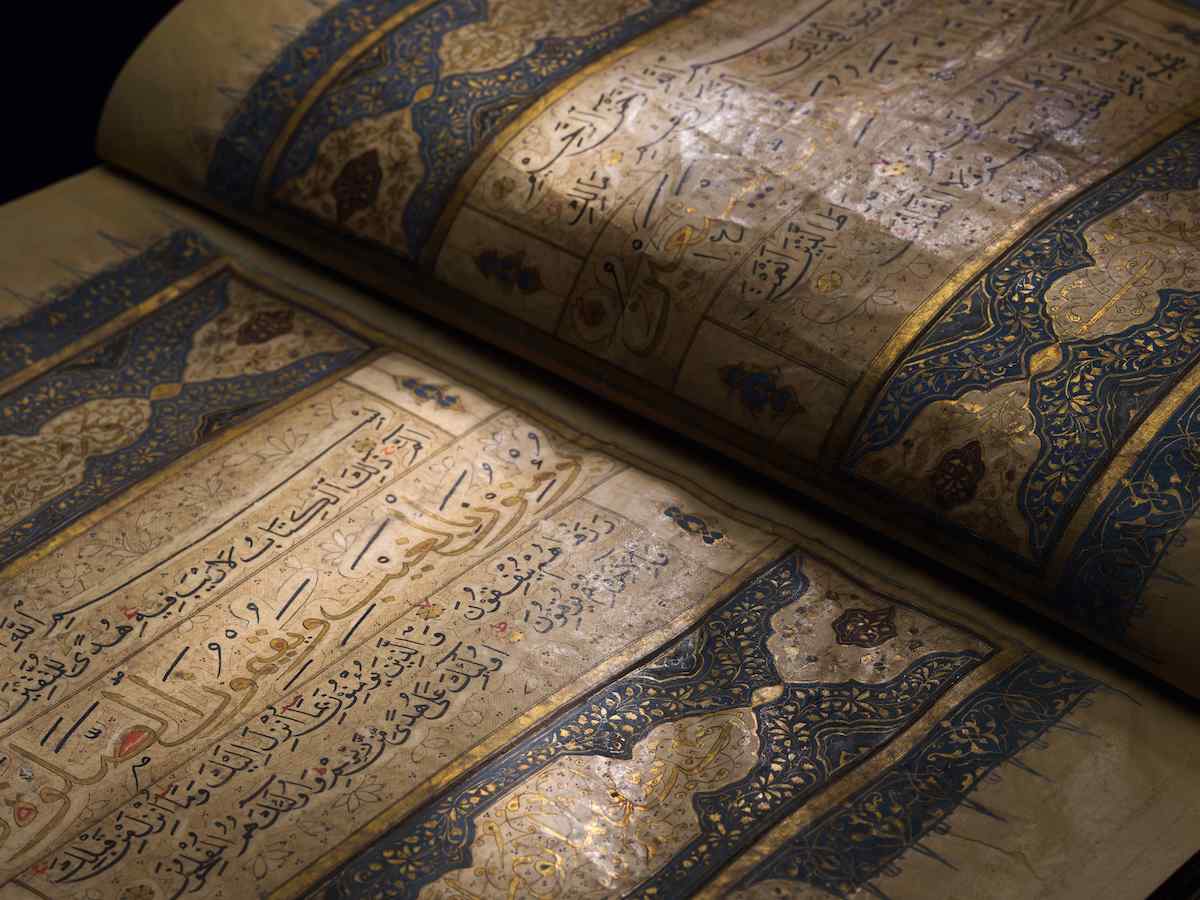
This manuscript, Sotheby’s said, “represents an outstanding calligraphic feat by one of the foremost practitioners in the history of the Islamic Arts of the Book, Ahmad Al-Rumi. He is known as a master of the six pens and was held in great esteem at the Timurid Court. … A small number of works by the scribe are known, including only one other Qur’an, rendering the manuscript to hand both extremely important and rare.” In this manuscript, Al-Rumi displayed his mastery of the art, using four different scripts — “a strong and angular Muhaqqaq interspersed with a fine and balanced Naskh for the main text, an elegant Thuluth for the surah headings, with the addition of Tawqi on the final page” — with extraordinary skill. “The colophon page is extraordinary, as not only do we see the text in four scripts, but also the use of the musalsal method, in which a pen isn’t lifted from the page, resulting in a seamless ‘chain’ of calligraphy,” Sotheby’s added in the catalogue notes. Sold for £378,000.
Illuminated Qur’an made for the chief justice of Jerusalem and Nablus, dated 1514 CE
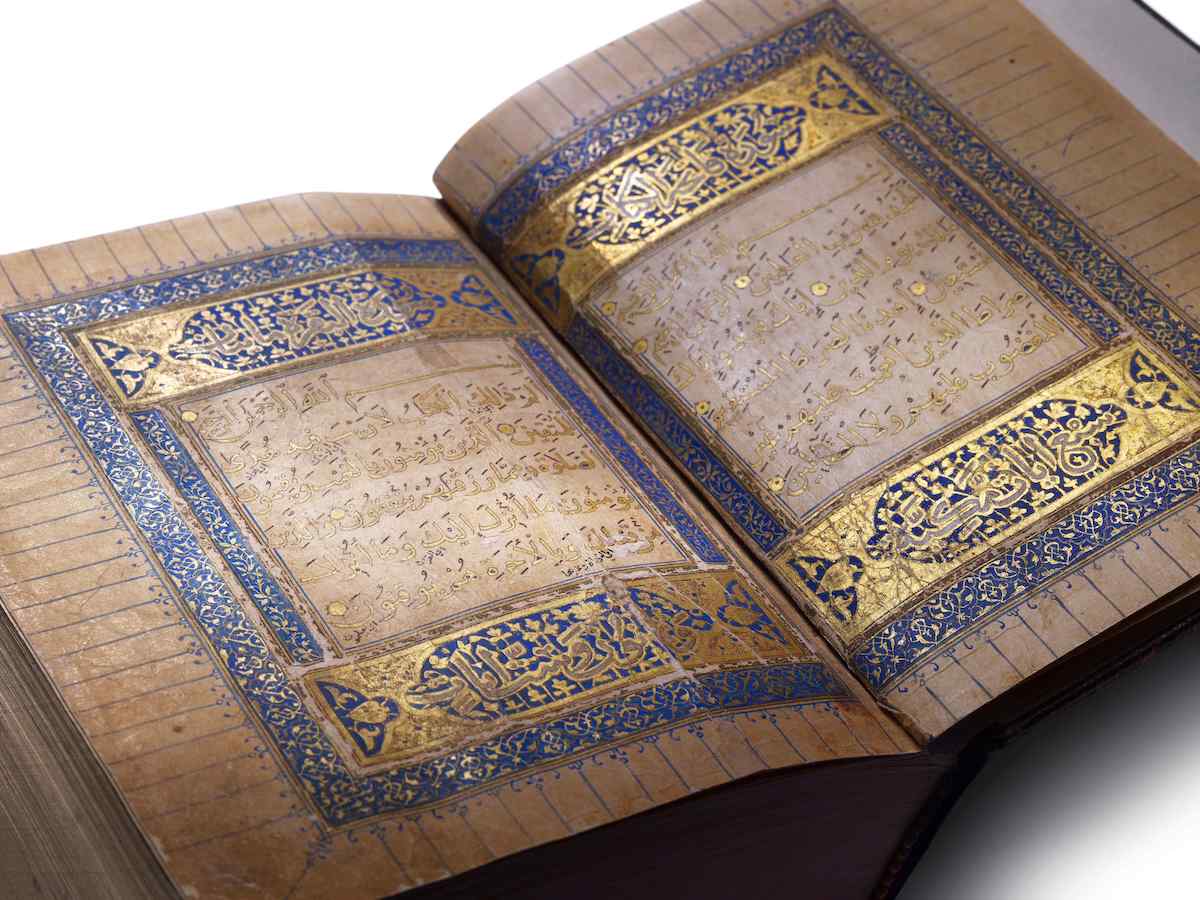
This remarkable complete copy of the Qur’an was scribed by master calligrapher Abu Al-Fadi Muhammad Ibn Abd Al-Wahhab Al-Shafi Al-Sunbati Al-Araj — a royal scribe to a Mamluk sultan and a student of Yasin Al-Jalali — and is dated 1514 CE. The piece was commissioned by a former chief justice of Jerusalem and Nablus, Jalal Al-Din Abu Al-Waffa Mohammad Ibn Junis Al-Hanafi, and was later owned by Hajj Uthman Kanoo Isma’il, who was mayor of Yanbu Al-Bahr, in Hijaz. The verses are written in the Naskh script, with surah headings in larger gold Thuluth script outlined in black. “The generous use of gold and silver in the illumination and text illustrates the wealth and prestige of the patron of this Qur’an,” the catalogue notes said. It also sold for £378,000 at the auction.
A compendium of works relating to the Hajj, from the 18th century
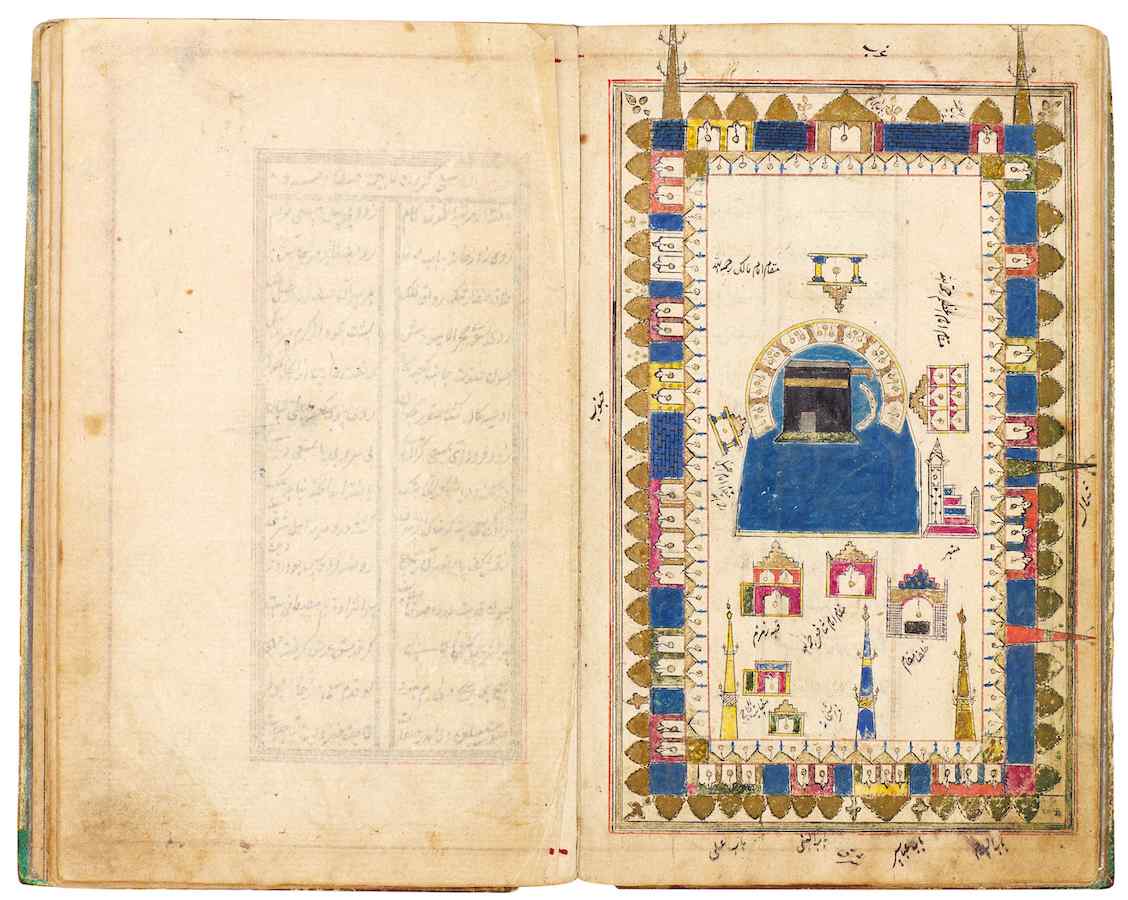
This manuscript contains two works — the first is an essay on Makkah, the Hajj, and the measurements of the Great Mosque; the second is a copy of the “Futuh Al-Haramayn,” a famous guidebook to the cities of Makkah and Madinah, originally written in the early 16th century, which included instructions for pilgrims on the rituals of the Hajj and the religious sites they could visit. This book, written in Nasta’liq script with important words written in red ink, also contains 19 illustrations of Makkah and Madinah. Sold for £50,400 at auction.
10th-century Qur’an leaf in gold Kufic script (12-18k sterling)
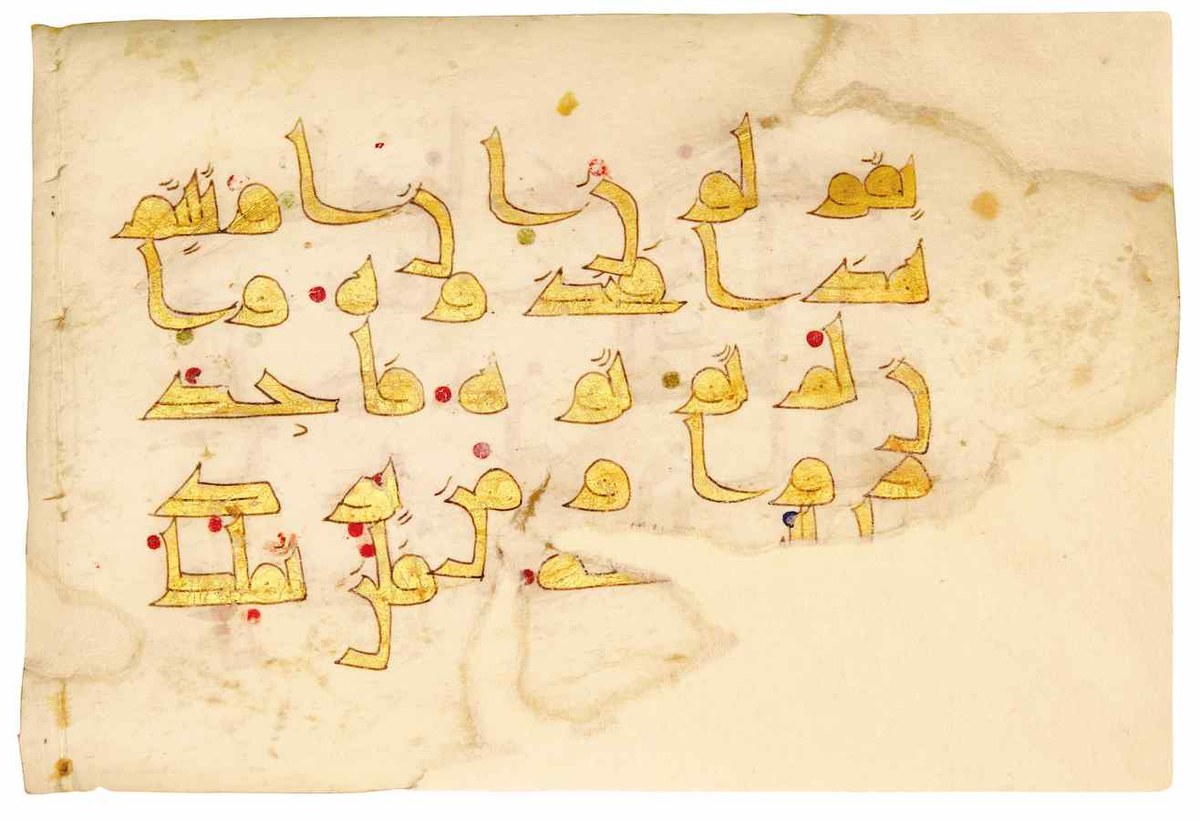
A real rarity — this folio containing five lines to the page of gold-colored script is part of one of just a handful of Qur’ans in which gold Kufic script was used. It would, the auction house explained, “have been a lengthy and expensive process, indicating a commission at the highest level of patronage.” It is believed to have originated from the Near East, and sold for £37,800 at auction.
Bifolium from the ‘Five Surahs,’ circa 1370
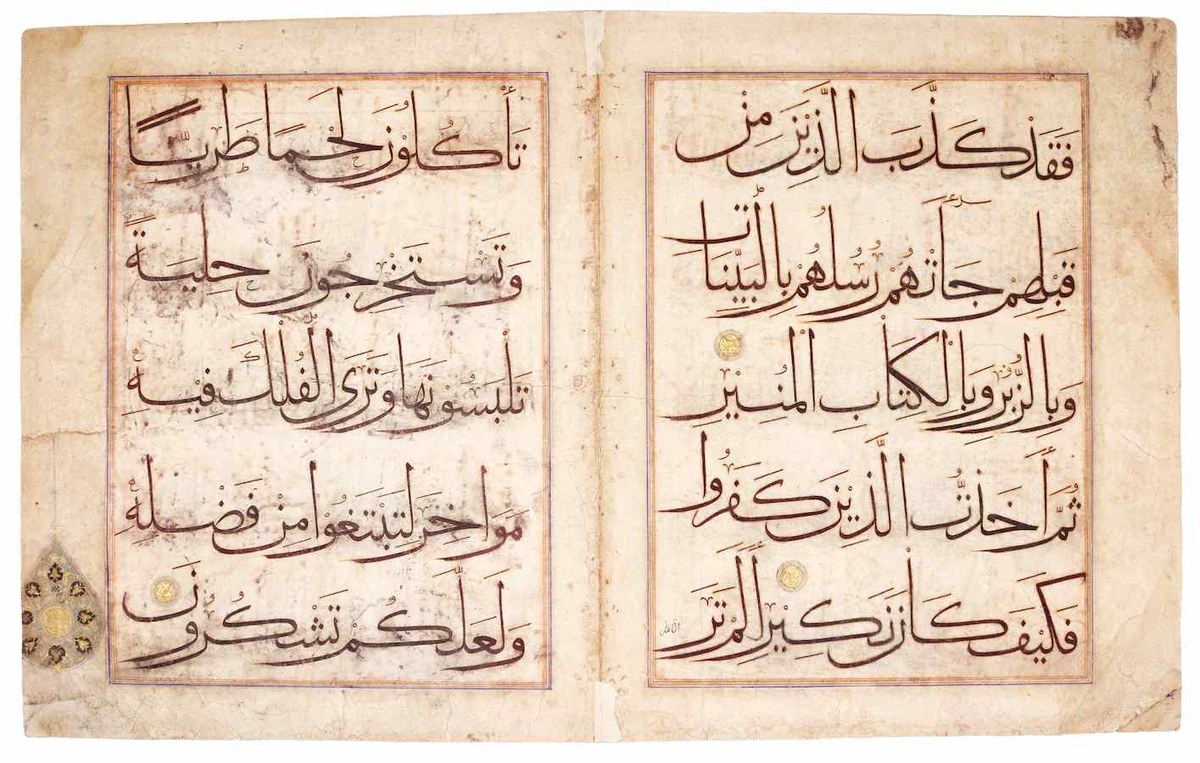
Pages taken from a manuscript of selected Qur’anic chapters (1, 5, 18, 34, and 35) that all begin with the phrase ‘Al-hamdulillah.’ The pages have been traced back to a manuscript that gives the name of the scribe as Abdul Qayyum Ibn Muhammad Ibn Karamshah-I Tabrizi. Sotheby’s cited calligraphy expert David James as describing Tabrizi’s work here in the Muhaqqaq script as, “Faultless perfection … equaled only by Suhrawardi in the Qur’an produced in Baghdad in the early years of the 14th century.” Sold for £37,800.
Illuminated Mamluk Qur’an from Egypt or Syria in the 14th century
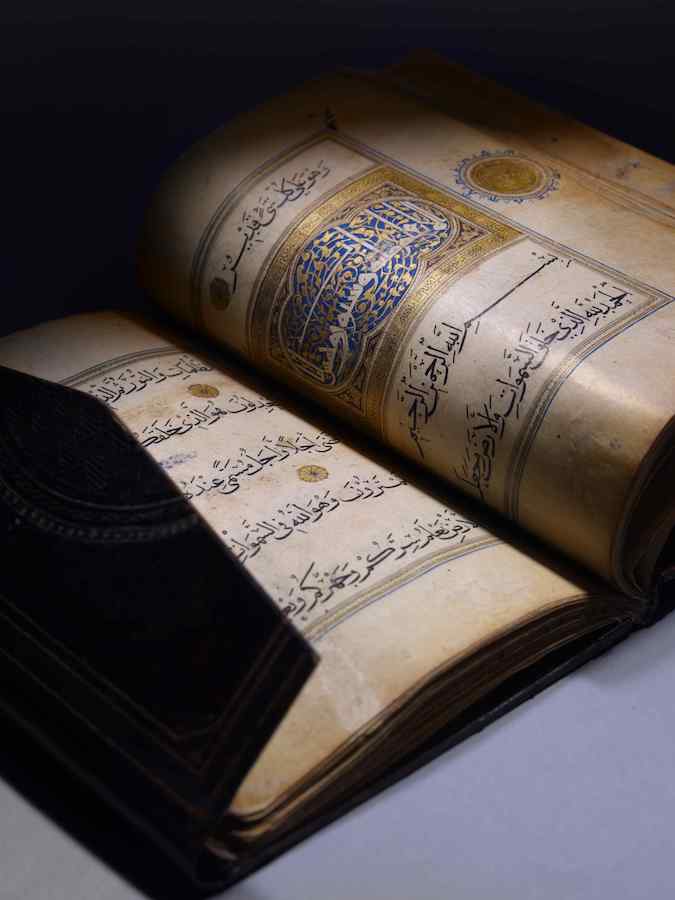
“This lavishly illuminated section comes from what must have been an impressive Qur’an in several volumes,” said Sotheby’s of this manuscript — in which the verses are written in Muhaqqaq script and separated by gold florets, while the titles are written in white Kufiq script on blue backgrounds with gold embellishments. The 42 leaves of the manuscript are bound in leather. “Its decoration and illumination recall both Ilkhanid court production (and) early Mamluk manuscripts, rendering it testament to these cross influences at the beginning of the 14th century,” the catalogue notes continue. Sold for £50,400.
Mid-14th-century Qur’an leaf attributed to Arghun Al-Kamili
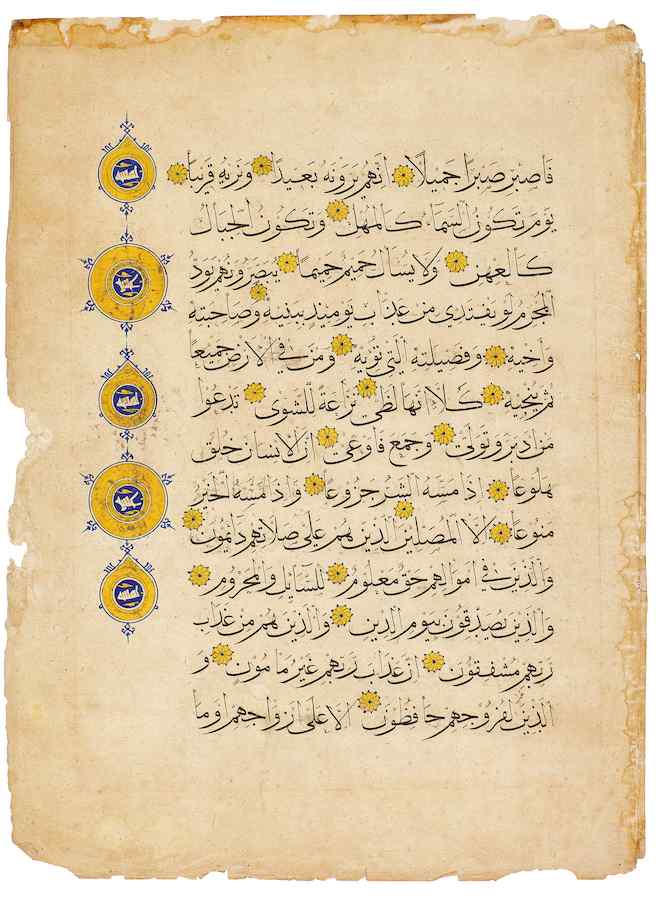
Pages from a Qur’an that is believed to have been scribed by Al-Kamili, one of the most prolific calligraphers working in Baghdad in the middle of the 14th century CE — a time when the Iraqi capital was the center of the calligraphic arts. Al-Kamili was one of the six famous pupils of Yaqut Al-Mustasimi — the secretary of the last Abbasid caliph, and was, Sotheby’s said, “renowned to a point that illuminators of his manuscripts signed their work in a wish to stress their association with him.” This leaf is written in Rayhani script and its verses are separated by blue and gold rosettes. It was expected to fetch around $20-25,000 at auction.
Illuminated Qur’an copied by Abdullah Al-Qadir Al-Husayni in the 16th century
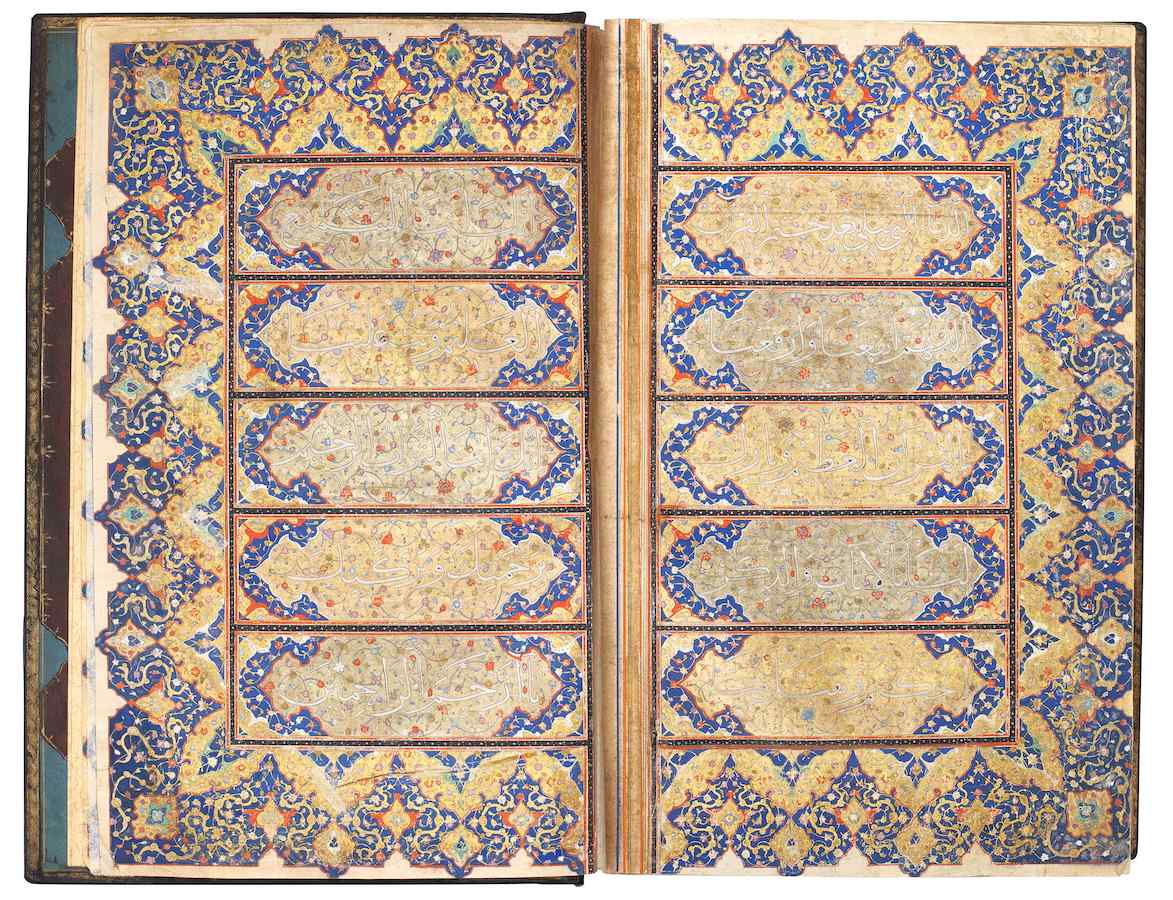
“This magnificent and well-preserved Qur’an has all the hallmarks of the most refined manuscripts of the Safavid period,” the catalogue notes said. Copies of the Qur’an were traded between the Ottoman and Safavid empires despite the animosity between them, and Qur’ans such as this were often offered as gifts to the Ottoman court by Safavid envoys. This particular manuscript is written in Naskh script and contains some fine examples of full-page illumination.
















